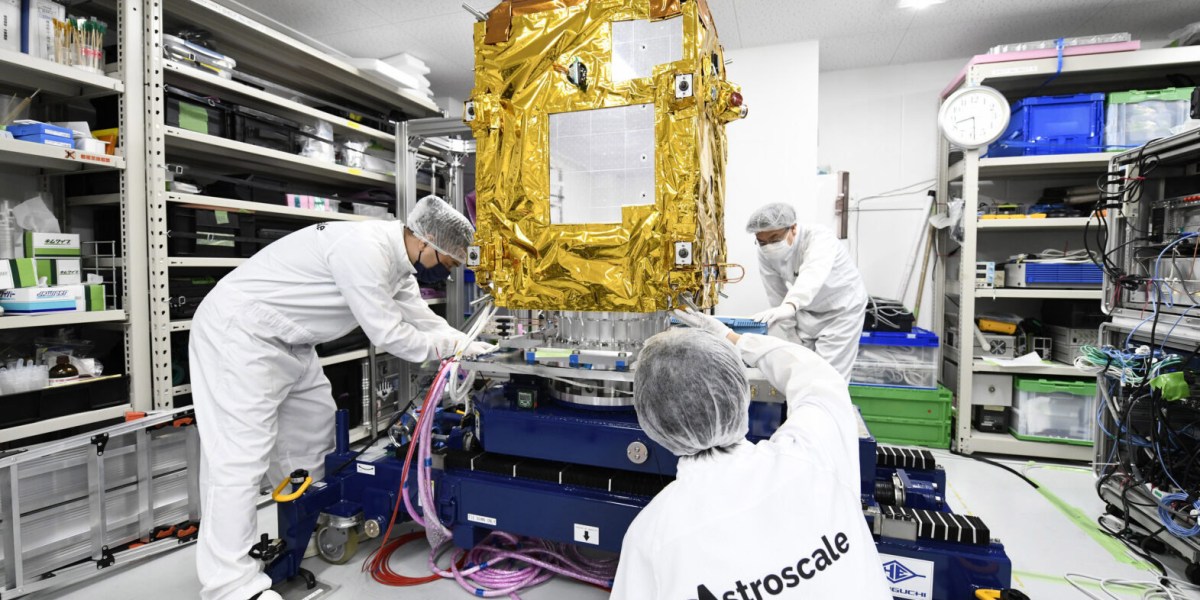The first-ever mission to pull a dead rocket out of space has just begun

There are an estimated 500,000 pieces of space junk as small as a centimeter across orbiting Earth, and about 23,000 trackable objects bigger than 10 centimeters. Dead rockets make up an interesting—and dangerous—category. The 956 known rocket bodies in space account for just 4% of trackable objects but nearly a third of the total mass. The biggest empty rockets, mostly discarded by Russia in the 1980s, 1990s, and 2000s, weigh up to nine tons—as much as an elephant.
These discarded upper stages, the top section of a rocket that boosts a satellite or spacecraft into its final orbit, are left to drift around our planet once the launch is complete. They are uncontrolled, spinning haphazardly, and pose a huge risk. If any two were to collide, they would produce a deadly cloud of up to “10,000 to 20,000 fragments,” says Darren McKnight, a space debris expert at the US debris tracking firm LeoLabs.
Such an event could happen at any moment. “At some point, I’d expect there to be a collision involving them,” says Hugh Lewis, a space debris expert at the University of Southampton in the UK. “There’s so much stuff out there.” That would pose a huge problem, rendering parts of Earth’s orbit unusable or, in a worst-case scenario, leading to a runaway chain reaction of collisions known as the Kessler syndrome. That could make some orbits unusable or even make human spaceflight too risky until the debris falls back into the atmosphere after decades to centuries.
Since 2007, when the United Nations introduced a new guideline that objects should be removed from space within 25 years of their operational lifetime, fewer rockets have been abandoned in orbit. Most upper stages now retain a bit of fuel to push themselves back into the atmosphere after launch. “They now tend to reserve some propellant to help them deorbit,” says Lewis. But thousands of “legacy objects” remain from before this rule was introduced, Lewis adds.
The rocket JAXA is targeting, as part of its Commercial Removal of Debris Demonstration (CRD2) program, is the upper stage of a Japanese H-IIA rocket that launched a climate satellite in 2009. Weighing three metric tons and as big as a bus, it orbits our planet at an altitude of 600 kilometers (373 miles). If left untended it will remain in orbit for decades, says Lewis, before the atmospheric drag of our planet is able to pull it back into the atmosphere. At that point it will burn up, with any remnants most likely falling into the ocean.
ADRAS-J’s mission is to figure out how to pull it back into the atmosphere before that happens. Sidling up to the rocket, the spacecraft will use cameras and sensors to inspect it from as near as a meter away. It will study the state of the rocket, including whether it is intact or if pieces have broken off and are drifting nearby, and also look for grapple points where a future spacecraft could attach.
“Designing a servicer to go up and grapple a three-ton piece of debris comes with a lot of challenges,” says Mike Lindsay, Astroscale’s chief technology officer. “The biggest challenge is dealing with the amount of uncertainty. The object has been up there for 15 years. It’s uncontrolled. We’re not communicating with it. So we don’t know how it’s moving, how it looks, and how it’s aged.”


